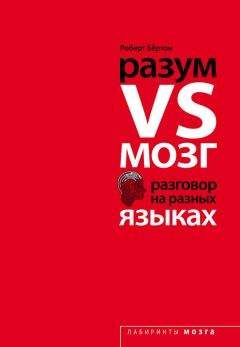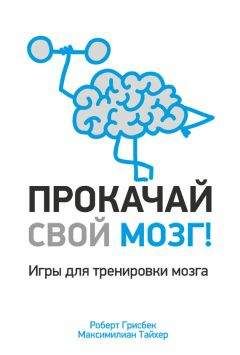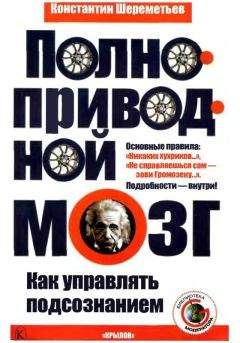Aghababian, V., & Nazir, T. A. (2000). Developing normal reading skills: Aspects of the visual processes underlying word recognition. Journal of Experimental Child Psychology 76(2):123–150.
Ahissar, M., & Hochstein, S. (2004). The reverse hierarchy theory of visual perceptual learning. Trends in Cognitive Sciences (10):457–464.
Ahissar, M., Protopapas, A., Reid, M., & Merzenich, M. M. (2000). Auditory processing parallels reading abilities in adults. Proceedings of the National Academy of Sciences 97(12):6832–6837.
Allison, T., McCarthy, G., Nobre, A. C., Puce, A., & Belger, A. (1994). Human extrastriate visual cortex and the perception of faces, words, numbers and colors. Cerebral Cortex 5:544–554.
Allison, T., Puce, A., Spencer, D. D., & McCarthy, G. (1999). Electrophysiological studies of human face perception. I: Potentials generated in occipitotemporal cortex by face and non-face stimuli. Cerebral Cortex 9(5):415–430.
Altmann, G. T. (2002). Statistical learning in infants. Proceedings of the National Academy of Sciences 99(24):15250–15251.
Ans, B., Carbonnel, S., & Valdois, S. (1998). A connectionist multiple-trace memory model for polysyllabic word reading. Psychological Review 105(4):678–723.
Arguin, M., Fiset, S., & Bub, D. (2002). Sequential and parallel letter processing in letter-by-letter dyslexia. Cognitive Neuropsychology 19:535–555.
Atran, S. (1990). Cognitive foundations of natural history. New York and Cambridge, UK: Cambridge University Press.
–—. (2002). In gods we trust: The evolutionary landscape of religion. New York: Oxford University Press.
Atran, S., Medin, D. L., & Ross, N. O. (2005). The cultural mind: Environmental decision making and cultural modeling within and across populations. Psychological Review 112(4):744–776.
Baker, C., Behrmann, M., & Olson, C. (2002). Impact of learning on representation of parts and wholes in monkey inferotemporal cortex. Nature Neuroscience 5(11):1210–1216.
Baker, C. I., Liu, J., Wald, L. L., Kwong, K. K., Benner, T., & Kanwisher, N. (2007). Visual word processing and experiential origins of functional selectivity in human extrastriate cortex. Proceedings of the National Academy of Sciences 104(21):9087–9092.
Barkow, J. H., Cosmides, L., & Tooby, J. (Eds.). (1992). The adapted mind: Evolutionary psychology and the generation of culture. New York: Oxford University Press.
Baylis, G. C., & Driver, J. (2001). Shape-coding in IT cells generalizes over contrast and mirror reversal, but not figure-ground reversal. Nature Neuroscience 4(9):937–942.
Beale, I. L., Williams, R. J., Webster, D. M., & Corballis, M. C. (1972). Confusion of mirror images by pigeons and interhemispheric commissures. Nature 238(5363):348–349.
Beauchamp, M. S., Lee, K. E., Argall, B. D., & Martin, A. (2004). Integration of auditory and visual information about objects in superior temporal sulcus. Neuron 41(5):809–823.
Beaulieu, C., Plewes, C., Paulson, L. A., Roy, D., Snook, L., Concha, L., & Phillips, L. (2005). Imaging brain connectivity in children with diverse reading ability. Neuroimage 25(4):1266–1271.
Bellenger, L. (1980). Les méthodes de lecture (2nd edition). Paris: Presses Universitaires de France.
Benasich, A. A., & Tallal, P. (2002). Infant discrimination of rapid auditory cues predicts later language impairment. Behavioral and Brain Research 136:31–49.
Bentin, S., Mouchetant-Rostaing, Y., Giard, M. H., Echallier, J. F., & Pernier, J. (1999). ERP manifestations of processing printed words at different psycholinguistic levels: time course and scalp distribution. Journal of Cognitive Neuroscience 11:235–260.
Berlin, B. (1992). Ethnobiological classification: Principles of categorization of plants and animals in traditional societies. Princeton, NJ: Princeton University Press.
Besner, D. (1989). On the role of outline shape and word-specific visual pattern in the identification of function words: NONE. Quarterly Journal of Experimental Psychology A 41:91–105.
Bhatt, R. S., Hayden, A., Reed, A., Bertin, E., & Joseph, J. (2006). Infants’ perception of information along object boundaries: Concavities versus convexities. Journal of Experimental Child Psychology 94(2):91–113.
Bianchi, L. (1921). La mécanique du cerveau et la fonction des lobes frontaux. Paris: Louis Arnette.
Biederman, I. (1987). Recognition-by-components: A theory of human image understanding. Psychological Review 94(2):115–147.
Biederman, I., & Bar, M. (1999). One-shot viewpoint invariance in matching novel objects. Vision Research 39(17):2885–2899.
Biederman, I., & Cooper, E. E. (1991). Evidence for complete translational and reflectional invariance in visual object priming. Perception 20(5):585–593.
Binder, J. R., Frost, J. A., Hammeke, T. A., Bellgowan, P. S., Rao, S. M., & Cox, R. W. (1999). Conceptual processing during the conscious resting state: A functional MRI study. Journal of Cognitive Neuroscience 11(1):80–95.
Binder, J. R., Frost, J. A., Hammeke T. A., Bellgowan, P. S., Springer, J. A., Kaufman, J. N., & Possing, E. T. (2000). Human temporal lobe activation by speech and nonspeech sounds. Cerebral Cortex 10(5):512–528.
Binder, J. R., McKiernan, K. A., Parsons, M. E., Westbury, C. F., Possing, E. T., Kaufman, J. N., & Buchanan L. (2003). Neural correlates of lexical access during visual word recognition. Journal of Cognitive Neuroscience 15(3):372–393.
Binder, J. R., Medler, D. A., Westbury, C. F., Liebenthal, E., & Buchanan, L. (2006). Tuning of the human left fusiform gyrus to sublexical orthographic structure. Neuroimage 33(2):739–748.
Binder, J. R., & Mohr, J. P. (1992). The topography of callosal reading pathways. A case-control analysis. Brain 115:1807–1826.
Bitan, T., & Karni, A. (2003). Alphabetical knowledge from whole words training: Effects of explicit instruction and implicit experience on learning script segmentation. Brain Research Cognitive Brain Research 16(3):323–337.
Blackmore, S. J. (1999). The meme machine. Oxford: Oxford University Press.
Bokde, A. L., Tagamets, M. A., Friedman, R. B., & Horwitz, B. (2001). Functional interactions of the inferior frontal cortex during the processing of words and word-like stimuli. Neuron 30(2):609–617.
Booth, J. R., Burman, D. D., Meyer, J. R., Gitelman, D. R., Parrish, T. B., & Mesulam, M. M. (2002). Functional anatomy of intra- and cross-modal lexical tasks. Neuroimage 16(1):7–22.
Booth, M., & Rolls, E. (1998). View-invariant representations of familiar objects by neurons in the inferior temporal visual cortex. Cerebral Cortex 8(6):510–523.
Bornstein, M. H., Gross, C. G.,





